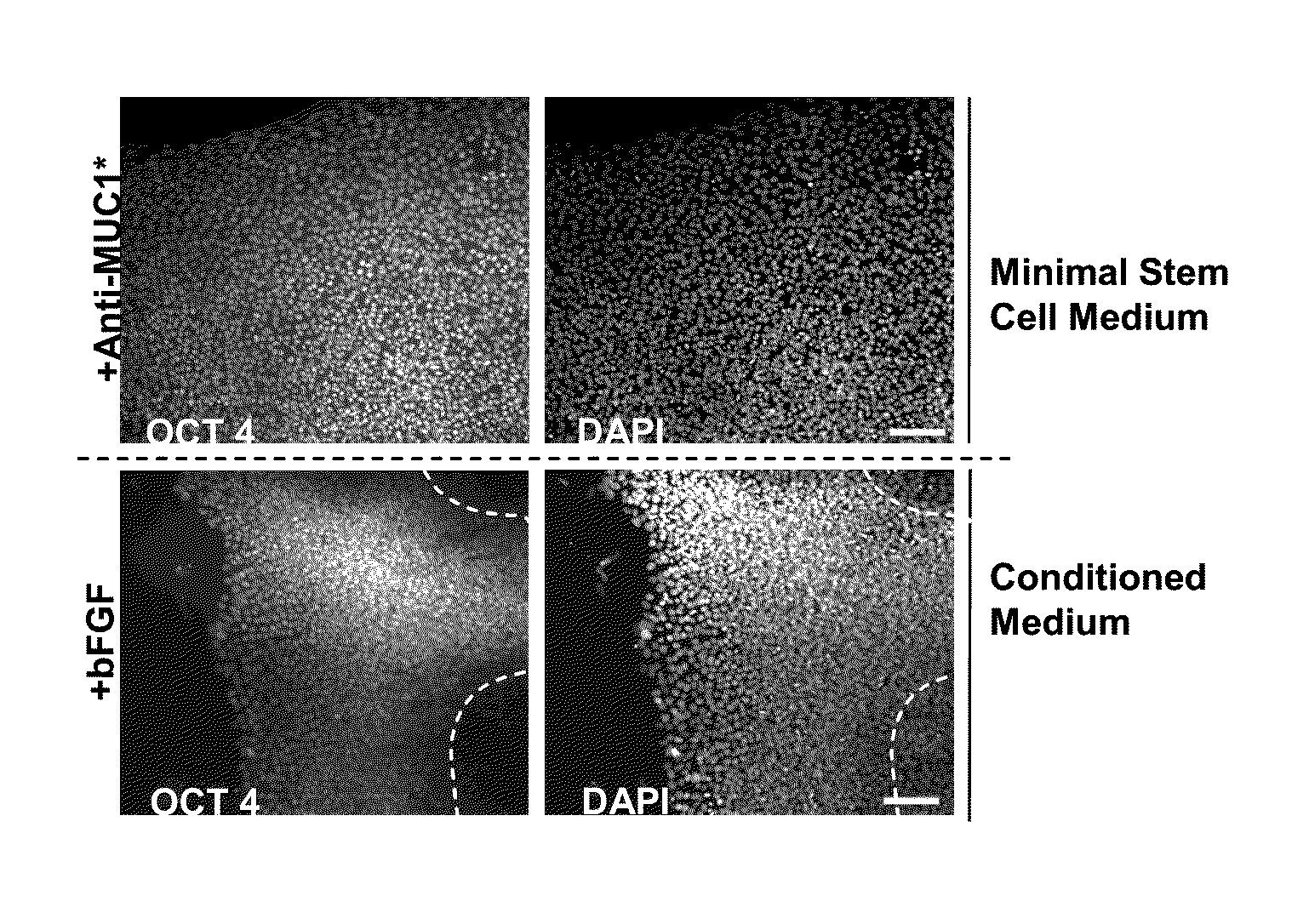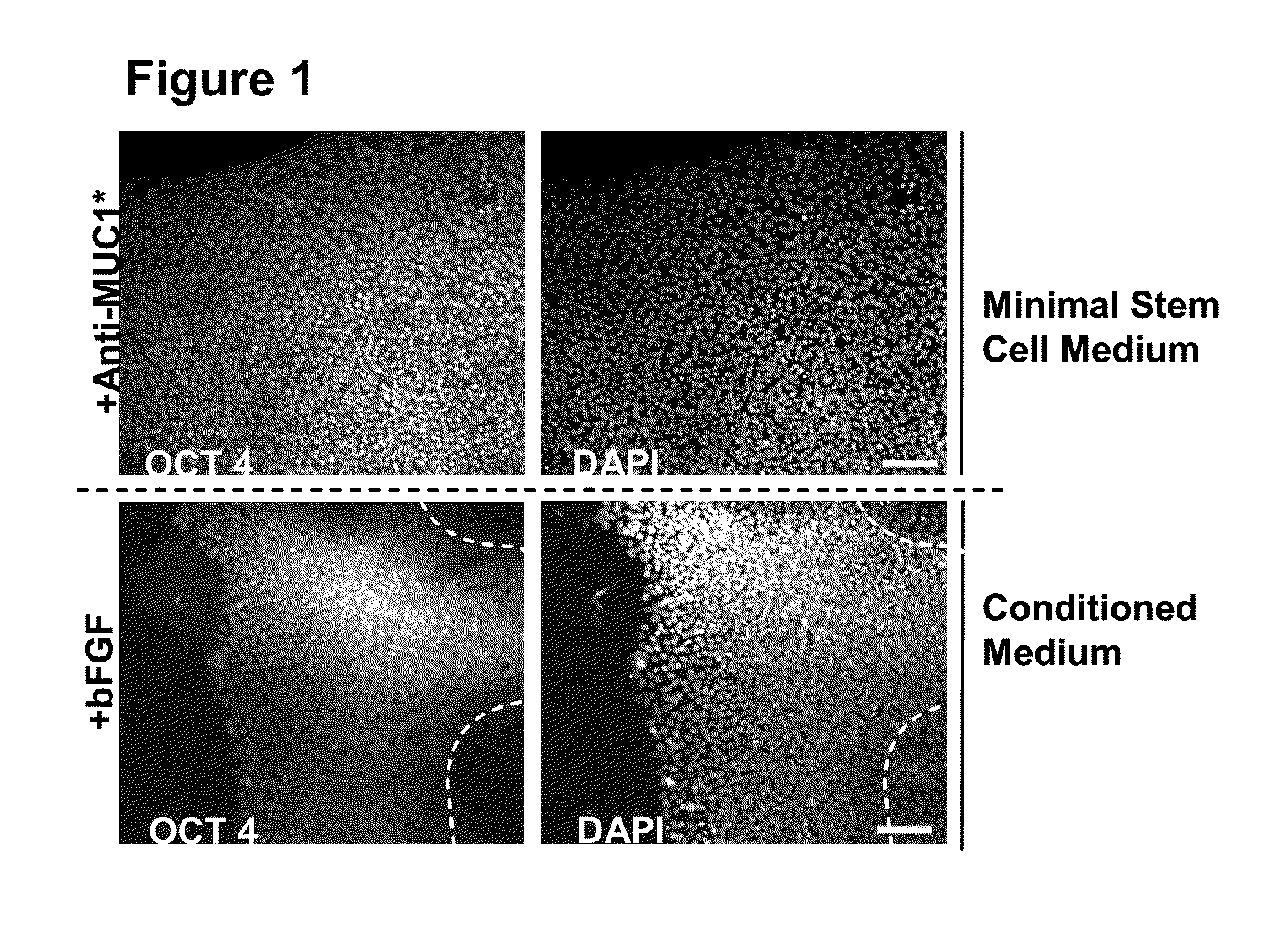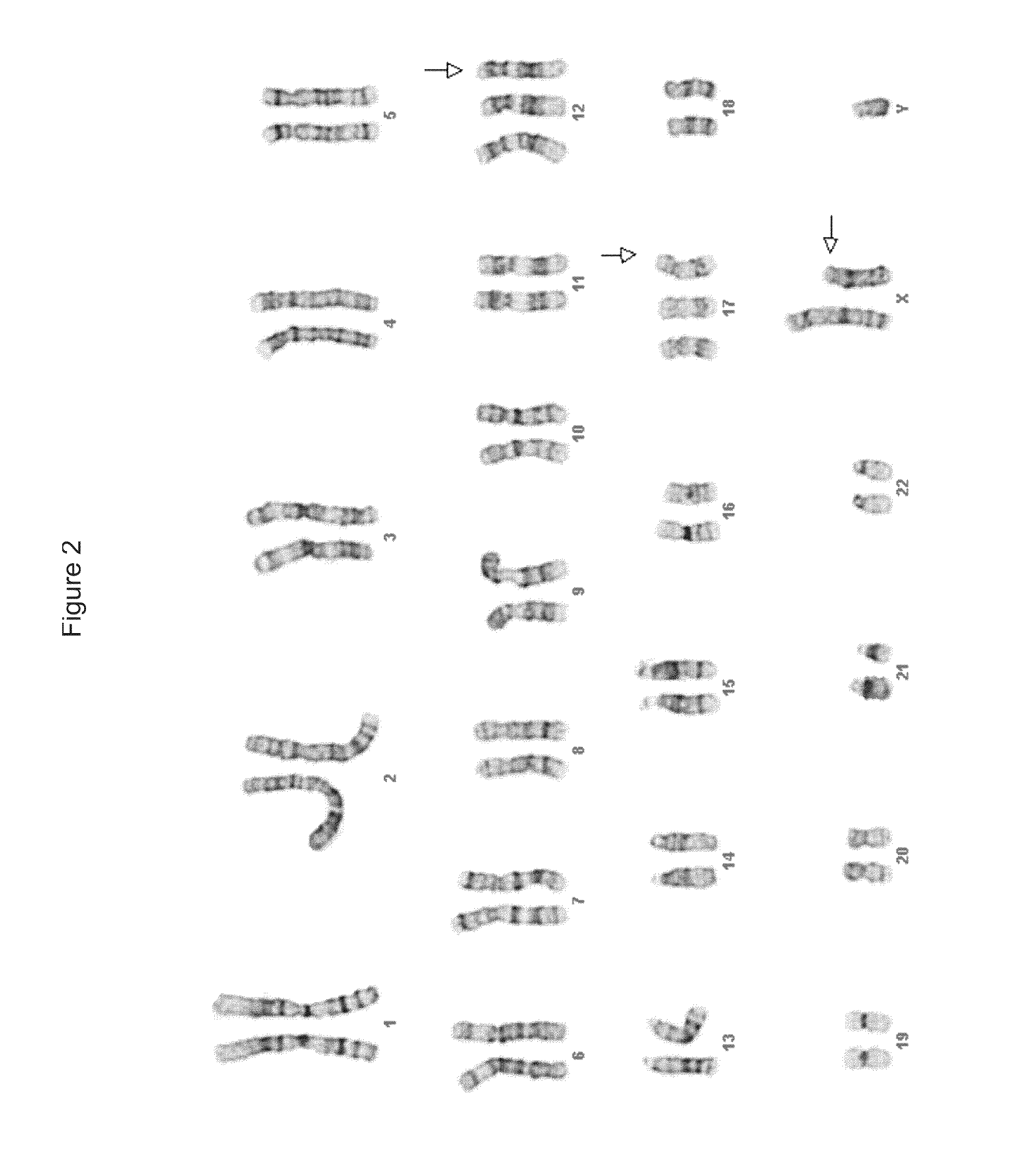Methods for culturing stem and progenitor cells
a stem and progenitor cell technology, applied in the field of methods for culturing stem and progenitor cells, can solve the problems of inability to grow using traditional methods, flawed procedures, and non-adherence of stem cells, and achieve the effects of inhibiting differentiation, promoting growth, and inhibiting the dimerization of muc1*
- Summary
- Abstract
- Description
- Claims
- Application Information
AI Technical Summary
Benefits of technology
Problems solved by technology
Method used
Image
Examples
example 1
Pluripotent Stem Cells Attached to Matrigel and Cultured in Minimal Media Plus Anti-MUC1* Antibodies Proliferate Faster and with Less Differentiation than Growth Supplemented by bFGF and Conditioned Media from Fibroblast Feeder Cells
[0105]H9 hESCs (WiCell) or BG01v / hOG, (Invitrogen) were cultured at 37° C. and 5% CO2 on either mitomycin-C inactivated Hs27 human foreskin fibroblasts (ATCC) in 6 well plates (BD Falcon). hESC culture media consisted of DMEM / F12 / GlutaMAX I with 20% Knockout Serum Replacement, 1% non-essential amino acids stock, 0.1 mM β-mercaptoethanol (all from Invitrogen) and 4 ng / ml human basic fibroblastic growth factor (bFGF, Peprotech). Cells were passaged by manual dissection every 5-7 days at a ratio of 1:3 and medium was changed every 48 hours. In some experiments, hESCs were grown on matrigel (BD Biosciences) with hESC culture media supplemented with 30% Hs27-conditioned medium and 4 ng / ml bFGF. In other experiments in which Anti-MUC1* was added, conditioned m...
example 2
Pluripotent Stem Cells Cultured in Anti-MUC1* Over Matrigel Maintain Stable Karyotype and Differentiate Normally
[0108]BG01v / hOG hu ES cells (Invitrogen) were plated onto Matrigel and cultured in Minimal Media (see Example.1) plus a rabbit polyclonal anti-MUC1* antibody (SRY 2a), at 80 ng / ml for 18 passages over the course of six (6) months. Cells were pelleted, DNA extracted and outsourced for karyotyping. FIG. 2 shows that the karyotype at the end of 18 passages was unchanged. Note that this stem cell line has tri-somal abnormalities; however it is pertinent that the karyotype was stable and unchanged by culturing in anti-MUC1* in the absence of other growth factors.
[0109]From this same batch of multiply passaged BG01v / hOG cells, undifferentiated stem cells were harvested by treatment with collagenase then suspended in minimal media for 14 days. Note that during this period, anti-MUC1* antibody is withdrawn to promote differentiation. This allowed the cells to form embroid bodies, ...
example 3
Surfaces that Promote Pluripotent Stem Cell Growth
[0110]Surfaces that present a ligand that binds to and dimerizes the extracellular domain of MUC1* provide pluripotent stem cells with a method for adhering to the plate surface and also activate the growth factor receptor function of MUC1*. Cell culture flasks, petri dishes or multi-well plates were coated with a rabbit polyclonal antibody raised against a peptide having the sequence of the MUC1* extracellular domain:
(SEQ ID NO: 1)GTINVHDVETQFNQYKTEAASRYNLTISDVSVSDVPFPFSAQSGA.
Antibodies that bind to the sequence given directly above are referred to here as anti-MUC1* antibodies or anti-PSMGFR antibodies. Tissue culture treated, as well as bare plastic, and polystyrene plates were used.
[0111]In one example, anti-MUC1* antibody (Zymed: custom antibody service) was added at 30, 100, or 300 ug / ml to wells of a 96-well cell culture treated plate (Tissue Culture Test Plate 96F TPP #92096) and allowed to adsorb overnight at 4 degrees C. Un...
PUM
| Property | Measurement | Unit |
|---|---|---|
| concentration | aaaaa | aaaaa |
| concentration | aaaaa | aaaaa |
| concentration | aaaaa | aaaaa |
Abstract
Description
Claims
Application Information
 Login to View More
Login to View More - R&D
- Intellectual Property
- Life Sciences
- Materials
- Tech Scout
- Unparalleled Data Quality
- Higher Quality Content
- 60% Fewer Hallucinations
Browse by: Latest US Patents, China's latest patents, Technical Efficacy Thesaurus, Application Domain, Technology Topic, Popular Technical Reports.
© 2025 PatSnap. All rights reserved.Legal|Privacy policy|Modern Slavery Act Transparency Statement|Sitemap|About US| Contact US: help@patsnap.com



